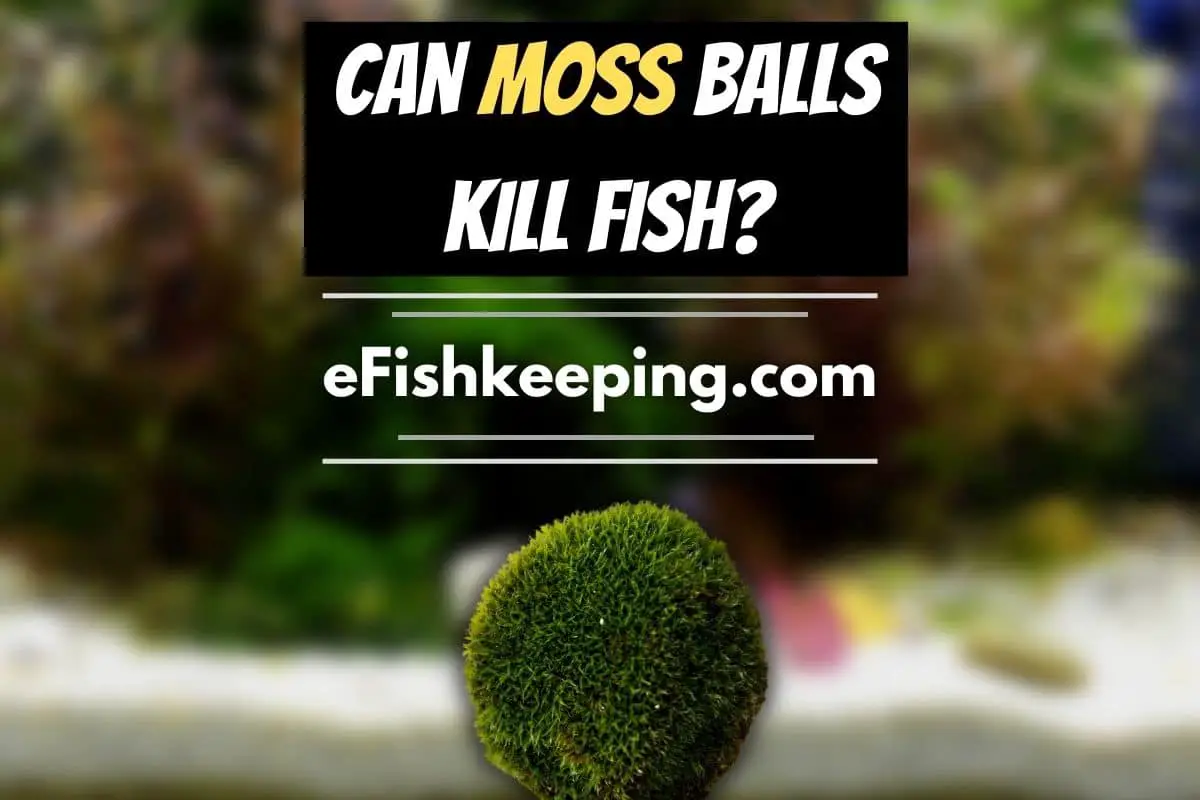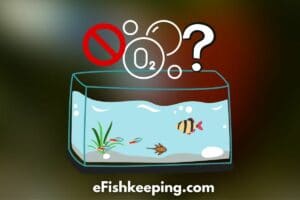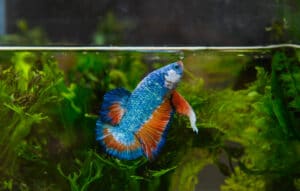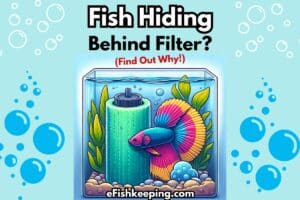Moss balls are a fascinating thing in nature, and offer some beautiful green elements to a variety of aquariums and fish tanks.
While these little green moss balls look nice, you might be worried about their compatibility and safety with the fish they live in the tank. Read on till the end to explore more.
Can Moss Balls Kill Fish?
Moss balls are not known to directly cause the death of fish. In fact, many fish, especially betta fish, benefit from having moss balls in their living space.
These balls offer aid in keeping your aquarium environment healthy for your fish, and also acts as a soft spot for resting and hiding. Betta fish even enjoy pushing these little balls around their aquariums.
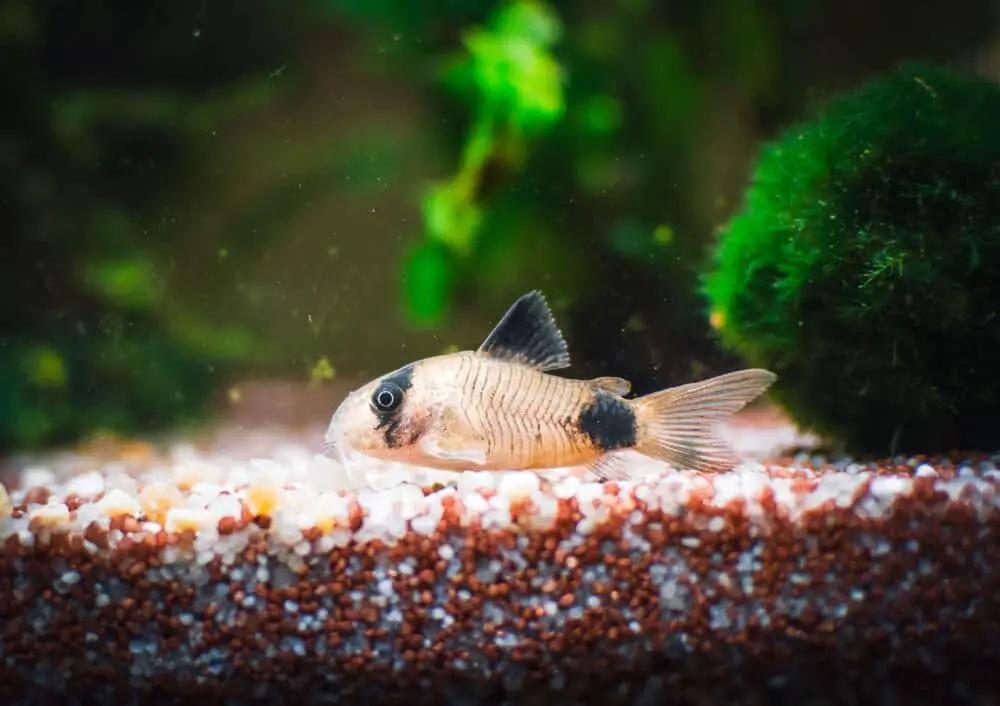
That said, there have been recent issues with moss balls infected with zebra mussels, which are very destructive and harmful for fish, plant life, and water systems. This makes it extremely important to know where your moss balls are sourced from before purchasing them.
One might assume that since, scientifically speaking, moss balls are a form of algae, it should seem counterintuitive to add algae into an aquarium when algae is so bad for fish.
However, you’d be pleased to know that this form of algae is fish safe; it actually helps reduce the chances of bad algae growing in your tank or aquarium.
One big benefit of having moss balls in aquariums is how they absorb nitrites and nitrates, which can both become very harmful to fish.
Having multiple moss balls in an aquarium, so long as its size permits it, is ideal as one moss ball can only do so much.
1. Can Fish Eat Moss Balls?
Some freshwater fish are prone to nibbling at moss balls, and some other fish or shrimp will eat off any fish food that gets caught in the ball. This isn’t known to be harmful to your fish, but it’s good to know that certain fish will eat it if you don’t want it to go to waste in your aquarium.
It might be a good idea to keep your eye on the moss balls with freshwater fish, goldfish, and shrimps, as they may break apart and destroy your moss balls.
This isn’t inherently harmful for these creatures, but it’s, of course, not great for your moss ball. Be sure they have enough food and they will likely avoid destroying your moss balls.
2. Do Fish Like Moss Balls?
There are many types of fish and aquatic creatures that like having moss balls in their environment. They offer a soft cushion for these creatures to rest on when they’re tired. Scavengers or shrimp also like looking for scraps of food that get caught within a moss ball.
Betta fish actually enjoy moss balls a lot, as they view them as a fun toy they can push around. It’s truly quite entertaining to watch.
Turtles and goldfish are also known to enjoy playing with these balls. Your fish moving these balls around is actually very good for the moss balls, as it helps them retain their round shape.
3. What Exactly Do Moss Balls Do?
Moss balls can have a host of benefits for your aquarium.
One of the best things they do is help to remove a lot of the bad elements that can build up in water and be of detriment to your fish. This includes helping to remove ammonia, nitrates, and bacteria that aren’t ideal for aquariums.
They can also assist you with keeping water clean by helping to collect fish waste, and take CO2 and convert it into oxygen before dispersing it back into the aquarium.
Moss balls can do all this without requiring a lot of care, and they don’t need to grow in certain lighting or temperatures like many other live greenery options for aquariums.
Moss balls also do all of this without creating any type of mess or residual impacts to the integrity of your aquarium’s water, as they don’t shed leaves.
The only time they could pose a nuisance to your aquarium is when they are dying, at which point they should be taken out.
Learn More: What Do Moss Balls Need?
4. Do Moss Balls Need Cleaning?
In order to make sure your moss ball remains safe for your fish, you need to clean it occasionally. There are a few steps to follow so that you do this properly, and you avoid your moss ball growing anything that may be harmful or dangerous for your fish.
A good rule of thumb is to remove your moss balls when you are changing over your water.
You should hold them over a bowl or a sink and squeeze them out.
Since your moss balls work hard to help keep your aquarium clean, squeezing them out will ensure they don’t become overwhelmed by all the debris and start letting it escape out into the water.
It’s also important to note that moss balls don’t need a lot of light, but will need some occasionally to encourage photosynthesis. This is how moss balls get the proper nutrition to stay green and healthy.
Otherwise, you may notice your moss ball becomes discolored. If your moss ball starts turning white, it’s been exposed to way too much light.
5. Recent Issues With Moss Balls
Knowing where your moss balls are coming from is important, as several have been found in the last couple of years to be infected with zebra mussels. These mussels can be very difficult to spot until it’s too late.
They can also kill your fish and any other plant matter in your aquarium, while also wreaking havoc on your community’s water system.
While finding clean moss balls can be hard, it’s not impossible.
Research more about the brands, see what people (especially the experienced tank owners) are talking about the particular moss ball brand, and take your judgment accordingly.
While researching I came across one article from mercurynews.com. In it, it is highlighted that alerts were issued in several states after zebra mussels were found in Betta Buddy Marimo Balls sold at PetCo stores.
So like that you can research more on the particular brand to verify the brand and its product credibility.
Even when you purchase from a trusted seller outside of regions where zebra mussels were discovered, you want to be sure you very closely inspect your moss balls when you bring them home.
You should also rinse them under water to help remove any potential passengers.
6. When To Remove Moss Balls From The Water?
Though moss balls don’t tend to die off like many other aquatic plants, they can still die or become a potential threat to your fish. Watching a moss ball’s coloring is a good indicator of whether or not they need to be removed.
While they won’t directly fill your fish when they are starting to wither away, they can indirectly cause harm to your fish.
Sometimes, signs of decay can hide inside the moss ball. If you’re concerned about your moss ball, split it open gently and take a look for discoloration, odor, or a change in texture.
You can easily reshape it after doing this if everything is good. Black spots are a strong indicator that your moss ball is decaying, and at that point, it’s time to dispose of it.
If there are only small spots that are discolored or seem to be unhealthy, you can also use tweezers to remove those spots.
You can then reshape the healthy leftovers of the moss ball and put it back in the water.
Final Thoughts
Moss balls can be a wonderful addition to your aquarium or fish tank, regardless of whether or not you house fish in them.
Can moss balls kill fish? Not directly; they can actually be great plant companions for many fish. However, with recent issues of zebra mussels affecting some moss balls, you must be incredibly careful when buying them.
Always go with a trusted seller with a great reputation and solid reviews. Be cautious about the fake moss plants that won’t be of benefit to your aquarium.
When they are healthy and free of contaminants, moss plants can actually help create a more peaceful, clean environment for a variety of fish.
Hi! I’m Praveen Ghoshal, the founder of eFishkeeping.com. Inspired by my Dad, I got interested in fishkeeping when I was a kid. Since then, I have been involved with this hobby. Currently, I have 3 fish tanks at our home, and I enjoy this hobby with my full family. Read more about me here.

